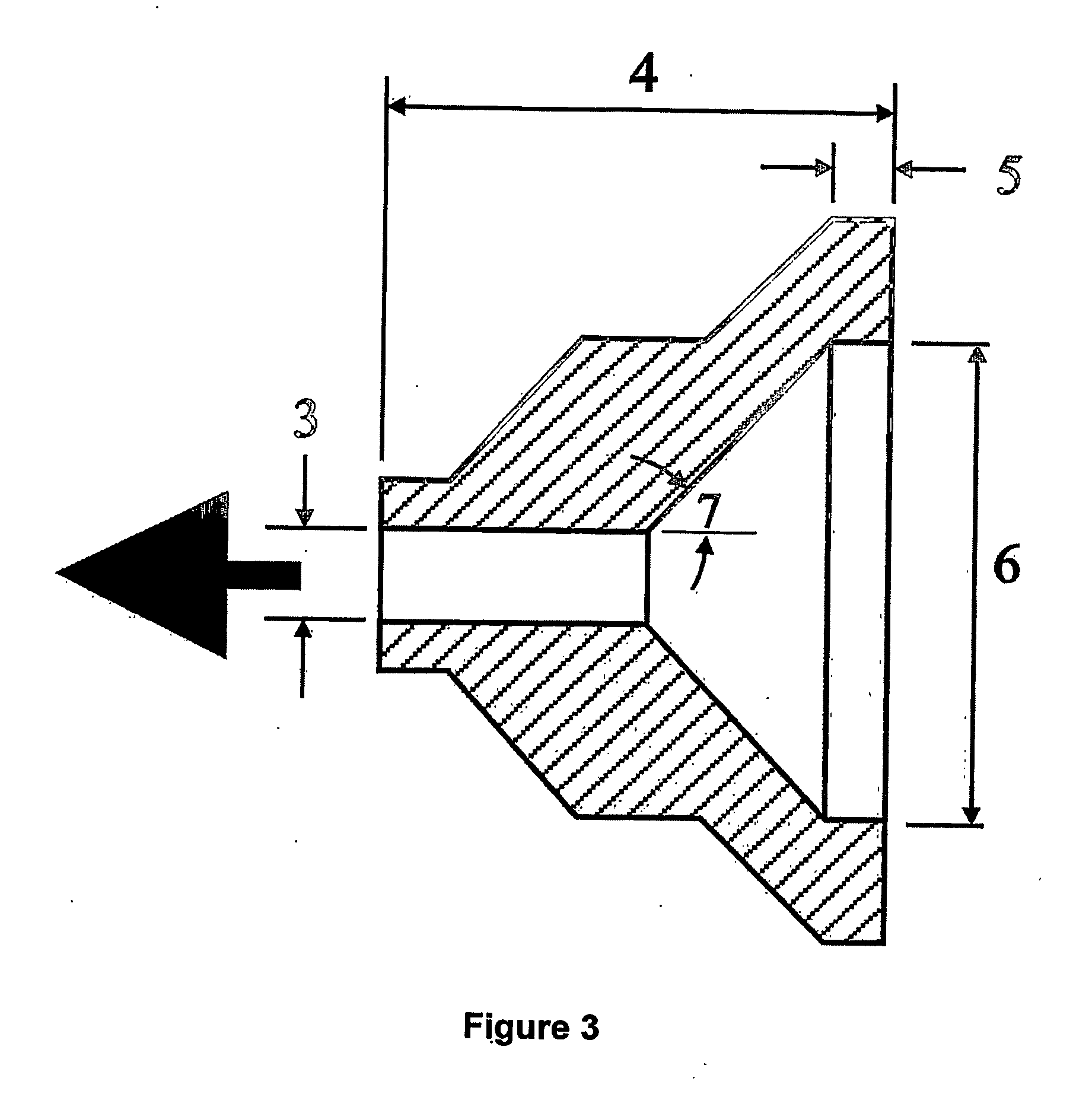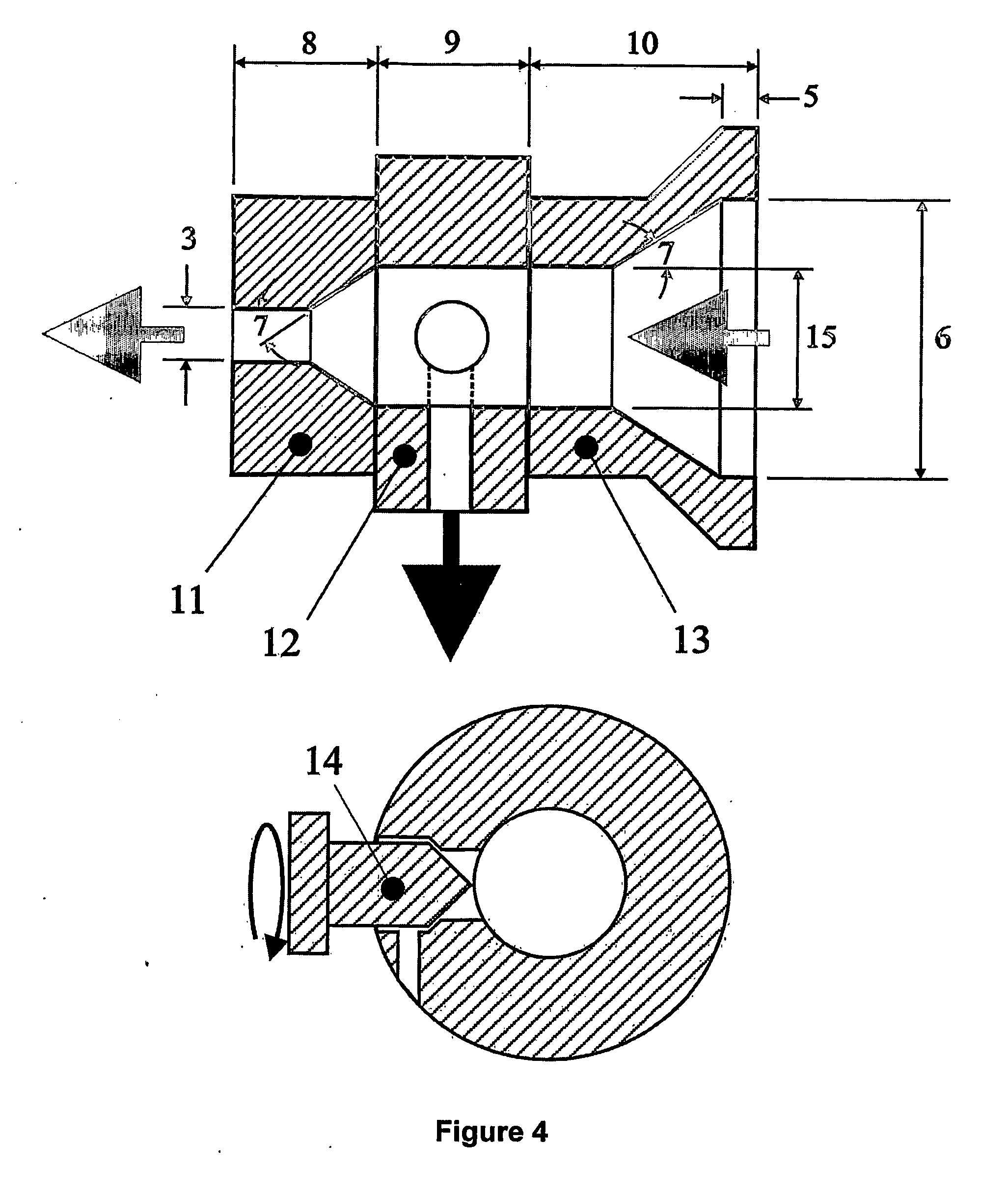Starch network as absorbent or superabsorbent materials and their preparation by extrusion
a superabsorbent material and starch technology, applied in the field of starch networks as absorbent or superabsorbent materials, can solve the problems of low molecular weight, inability to biodegrade or hypoallergenic, and inability to absorb starch,
- Summary
- Abstract
- Description
- Claims
- Application Information
AI Technical Summary
Problems solved by technology
Method used
Image
Examples
examples 1-16
[0071] Table 3 illustrates the effect on the FSC and CRC of different amylopectin / amylose blends extruded through a 8.5 mm diameter die. For each example, a paste was prepared by weighing 5 Kg of amylopectin / amylose blend (having a moisture content of about 9%), followed by adding 1.5 Kg of water to obtain a total moisture content of about 30%. The blends were prepared from common corn starch having an amylopectin content of 72%, and waxy maize starch having an amylopectin content of at least 99%. The pastes were hand-fed into SSE1 having the following barrel / die temperature profile: Tb1=50° C., Tb2=65° C., Tb3=135° C., Td=135° C. The obtained extrudates were subsequently aged for 2 days at 85° C. in a convection oven and ground with a coffee grinder. As can be concluded from the results shown in Table 3, amylopectin extruded at low flow rates provides extrudates having superior FSC and CRC characteristics. Furthermore, starches having an amylopectin content of at least 90%, provide...
examples 17-18
[0072] Table 4 illustrates the effect of the die extrusion throughput (Qdie) and the die geometry on the FSC and CRC of the extrudates. The die extrusion throughput was controlled by a valve as illustrated in FIG. 4. A molecular network of self-entangled starch was formed with this die. For each example, a paste was prepared by weighing 5 Kg of a waxy maize starch (having a moisture content of about 9%), followed by adding 1.5 Kg of water to obtain a total moisture content of about 30%. The pastes were hand-fed into SSE2, turning 30 RPM, and having the following barrel / die temperature profile: Tb1=50° C., Tb2=65° C., Tb3=135° C., Td=135° C. The obtained extrudates were subsequently aged for 2 days at 85° C. in a convection oven and ground with a coffee grinder. As can be concluded from the results shown in Table 4, a lower die extrusion throughput and using the die configuration as illustrated in FIG. 4, provides extrudates having superior FSC and CRC characteristics.
TABLE 4Effect...
examples 19-25
[0073] Table 5 illustrates the effect on the FSC and CRC of various amylopectin extrudates produced with or without crosslinking agent (also referred too as C-linker) using a TSE (die diameter of 6 mm). For each example, a paste was prepared by weighing 7 Kg of waxy maize starch (having a moisture content of about 9%), followed by adding 2.1 Kg of water to obtain a total moisture content of about 30%. The pastes were fed into the TSE (turning at 100 RPM) using a K-Tron T35™ volumetric feeder. When a cross-linking agent is used, the crosslinker is first dissolved in the water, along with the appropriate amount of sodium hydroxide, prior to adding the water to the waxy maize starch. The TSE had the following barrel / die temperature profile: Tb1=43° C., Tb2=59° C., Tb3=80° C., Tb4=108° C., Tb5=132° C., Tb6=151° C., Tb7=159° C., Tb8=159° C. (the die was not heated). The obtained extrudates were subsequently aged for 2 days at 60° C. in a convection oven and ground with a coffee grinder. ...
PUM
| Property | Measurement | Unit |
|---|---|---|
| temperature | aaaaa | aaaaa |
| temperature | aaaaa | aaaaa |
| size | aaaaa | aaaaa |
Abstract
Description
Claims
Application Information
 Login to View More
Login to View More - R&D
- Intellectual Property
- Life Sciences
- Materials
- Tech Scout
- Unparalleled Data Quality
- Higher Quality Content
- 60% Fewer Hallucinations
Browse by: Latest US Patents, China's latest patents, Technical Efficacy Thesaurus, Application Domain, Technology Topic, Popular Technical Reports.
© 2025 PatSnap. All rights reserved.Legal|Privacy policy|Modern Slavery Act Transparency Statement|Sitemap|About US| Contact US: help@patsnap.com



